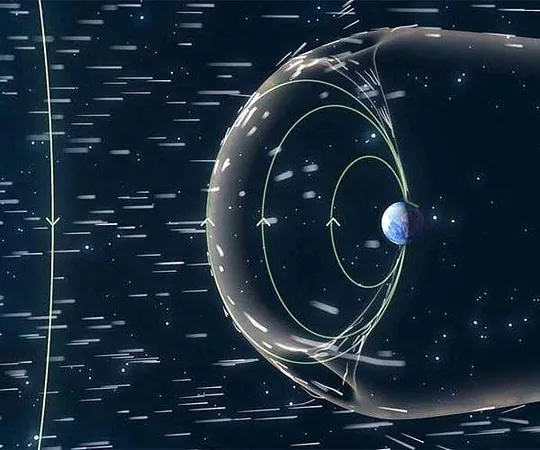
NASA Teams Up with NOAA to Shield Earth from Space Weather Hazards!
2024-11-28
Author: Li
Introduction
In an exciting development for space science, NASA has awarded a groundbreaking contract to Johns Hopkins University's Applied Physics Laboratory (APL) to create advanced space weather sensors for NOAA's Space Weather Next Program. The contract, totaling a hefty $20.5 million, is set for completion by January 31, 2034, and signifies a major collaboration aimed at enhancing our planet's protection from the potentially damaging effects of solar activity.
The Role of Suprathermal Ion Sensors
These cutting-edge Suprathermal Ion Sensors are integral to the Lagrange 1 Series project, designed to provide real-time data crucial for accurate space weather forecasting. The sensors will be meticulously designed, fabricated, and tested at APL's Maryland facilities, NASA's own Goddard Space Flight Center, and Kennedy Space Center in Florida. Moreover, the contract encompasses essential launch support and ongoing maintenance of ground equipment, ensuring these instruments function effectively long after their deployment.
Enhancing NOAA's Capabilities
The Suprathermal Ion Sensors are engineered to measure energetic ions and electrons across a wide spectrum, delivering continuous monitoring that will significantly enhance NOAA's Space Weather Prediction Center's capabilities. This vital data will allow scientists to predict solar events, such as coronal mass ejections and interplanetary shocks, which could disrupt power grids, communications, and navigation systems on Earth.
Collaboration Framework
NOAA will manage the overall program and oversee funding and operational aspects, including the critical task of data dissemination. Meanwhile, NASA, alongside its commercial partners, will focus on the development, launch, and instrumentation of the spacecraft involved in this ambitious project.
Importance of the Initiative
A NASA spokesperson emphasized the importance of this partnership, stating, 'These instruments will deliver vital real-time information to safeguard infrastructure and provide early warnings of space weather events.' With our reliance on technology continuing to grow, this initiative could prove pivotal in protecting vital services from space weather-related disruptions—underscoring how science is consistently evolving to safeguard our everyday lives.
Conclusion
Stay tuned as this collaboration unfolds, and witness how cutting-edge technology works to keep our planet safe from the unpredictability of space weather!


 Brasil (PT)
Brasil (PT)
 Canada (EN)
Canada (EN)
 Chile (ES)
Chile (ES)
 España (ES)
España (ES)
 France (FR)
France (FR)
 Hong Kong (EN)
Hong Kong (EN)
 Italia (IT)
Italia (IT)
 日本 (JA)
日本 (JA)
 Magyarország (HU)
Magyarország (HU)
 Norge (NO)
Norge (NO)
 Polska (PL)
Polska (PL)
 Schweiz (DE)
Schweiz (DE)
 Singapore (EN)
Singapore (EN)
 Sverige (SV)
Sverige (SV)
 Suomi (FI)
Suomi (FI)
 Türkiye (TR)
Türkiye (TR)